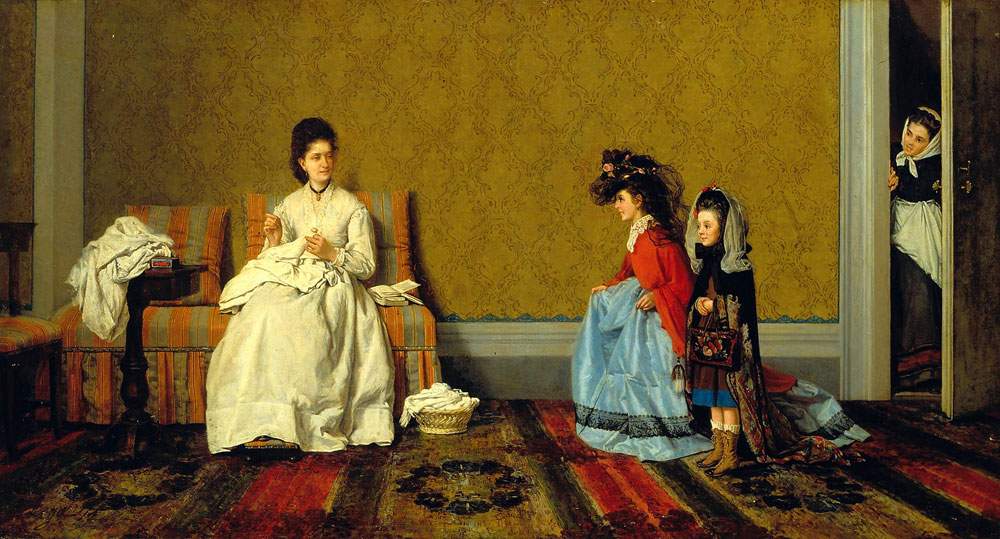Extended until June 30, 2021 and therefore open to the public as soon as museums and exhibitions reopen, the exhibition I Macchiaioli. Masterpieces of Italy Rising set up in Padua at Palazzo Zabarella. Curated by Giuliano Matteucci and Fernando Mazzocca and with valuable contributions in the catalog by Silvio Balloni and Claudia Fulgheri, expert scholars of the Macchiaioli, it showcases one hundred masterpieces through which it is intended to celebrate “unconventional artists who were free and bold, in defiance of the conventions and rules of the time; artists who loved to paint everyday life, human value, instants of life and the immediacy of acts and emotions with strength, courage and the desire to start again day after day with renewed energy in spite of any difficulty,” according to a statement by Foundation President Federico Bano.
“The exhibition celebrates the Macchiaioli by lifting the veil on precisely what were the ancient collections and courageous creators and on many completely unseen aspects,” added one of the curators Giuliano Matteucci. “A totally engaging and highly effective cultural operation.”
The exhibition aims to retrace one of the public’s most beloved movements, but with the intention of reopening an important chapter in Italian art history and enriching it with unpublished points of view and rigorous scientific research through often neglected sources. The project revolves around the collectors and patrons of the protagonists of the movement, such as Silvestro Lega, Giovanni Fattori, Giovanni Boldini, Telemaco Signorini, Adriano Cecioni, Odoardo Borrani, Raffaello Sernesi, and Vincenzo Cabianca. We then meet the personalities who flanked and supported the work of the masters: fellow painters who understood their innovative scope and artistic value, such as Cristiano Banti, Michele Gordigiani, and Ernesto Bertea. Friends patrons who often welcomed them into their families, such as the Cecchini, Bandini, and Batelli families, who played an important role in Signorini’s tormented biography. In particular, Diego Martelli, critic and man of letters, is remembered: not only did he always actively support the Macchiaioli, but he prepared for them a place of choice and ’inspiration, namely his house in Castiglioncello, which was always open for all of them, transforming a bourgeois vacation village into a symbol of creativity and freedom of vision.
In addition, despite this closed period, Palazzo Zabarella welcomes children and young people to the exhibition through two twenty-minute virtual tours in which the exhibition layouts and details of important works alternate. The guiding voice will focus on themes of daily life, intimacy, work, nature, the countryside and animals in the first virtual tour aimed at children in grades IV and V elementary and I and II middle school. Focus of the first video will be the works: Wheat Harvesting in the Mountains of San Marcello by Odoardo Borrani; Alms and The Little Girls Making Ladies by Silvestro Lega; The Chores of the House by Adriano Cecioni; “Avenue with Oxen and Stone Breakers” by Giovanni Fattori; In the Sun and Return from the Fields by Vincenzo Cabianca. The virtual tour, on the other hand, aimed at 3rd grade and high school students, starting with the historical context in which the Macchiaoli worked, also deals in depth with the innovative and revolutionary technique of these artists. Protagonists of the second video are: Silvestro Lega’s L’elemosina and Le bambine che fanno le signore ; Giovanni Del Greco medico garibaldino soccorso i feriti durante la battaglia di Bezzecca; Giovanni Fattori’s La mena in Maremma and Viale con buoi e spaccapietre ; and Telemaco Signorini’s Waiting and Ore d’ozio a Riomaggiore.
For more info: zabarella.it
Image: Silvestro Lega, Le bambine che fanno le signore (1872; oil on canvas, 60x100; Viareggio, Matteucci Institute)
 |
| Padua, large Macchiaioli exhibition extended to June 30, 2021 |
Warning: the translation into English of the original Italian article was created using automatic tools. We undertake to review all articles, but we do not guarantee the total absence of inaccuracies in the translation due to the program. You can find the original by clicking on the ITA button. If you find any mistake,please contact us.